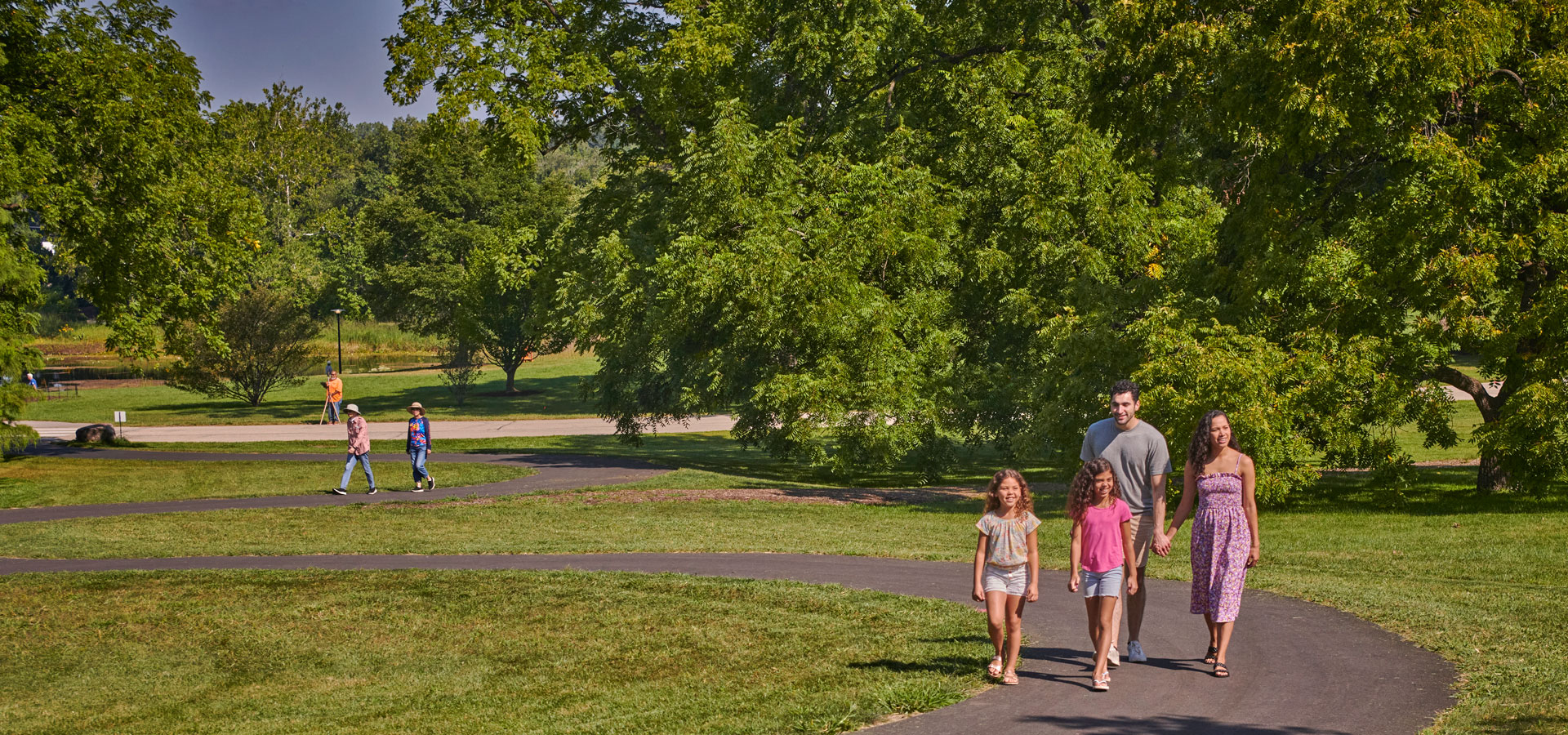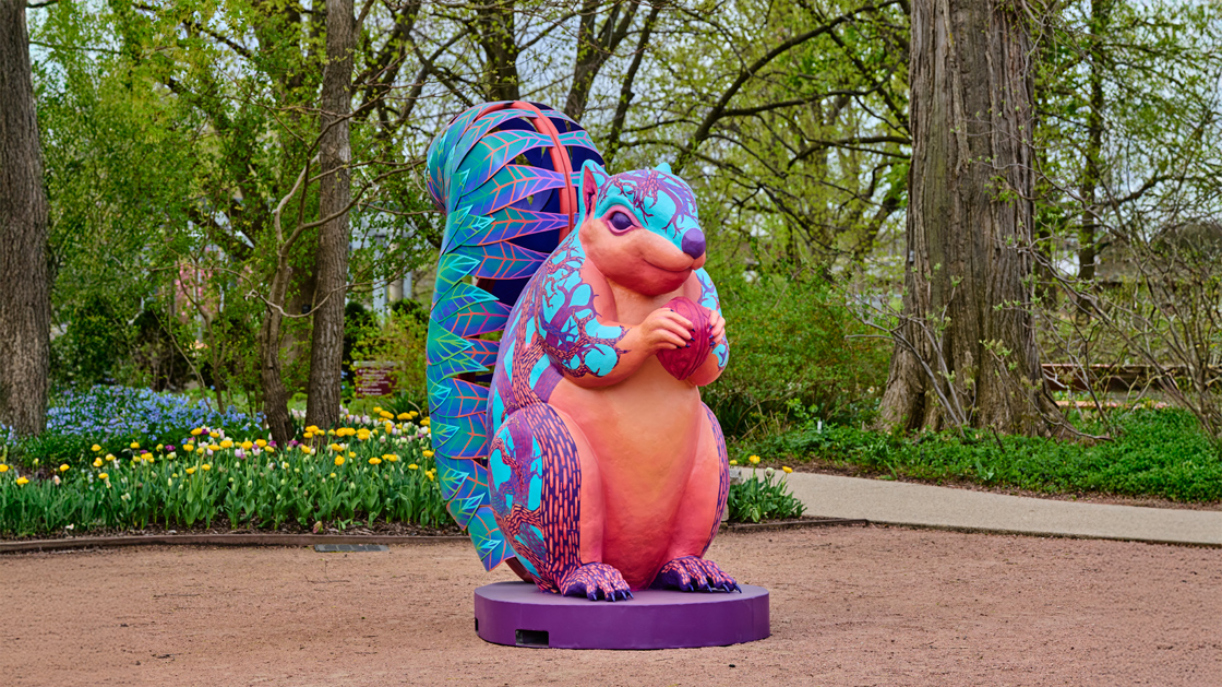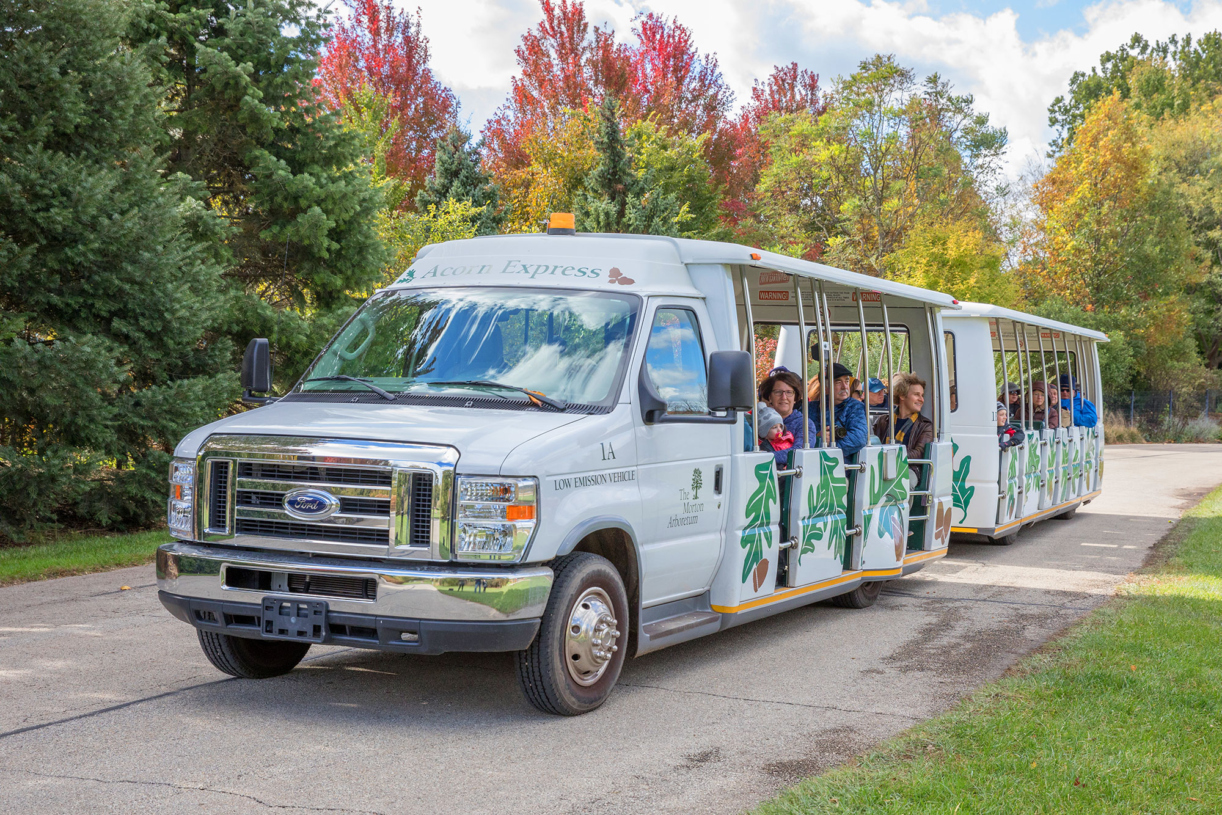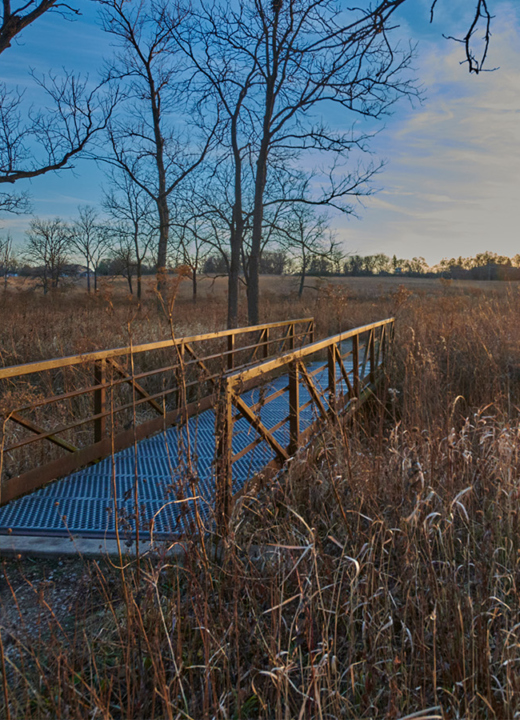The Morton Arboretum is a large public garden with tree-filled landscapes, flower-filled gardens, festive events, areas for children to safely play outdoors, and extensive walking trails through beautiful woodlands, lakes, and prairies.
Located in Chicago’s western suburbs, The Morton Arboretum is just west of Interstate 355 and north of Interstate 88 on Illinois Route 53 in DuPage County. It is open from 7:00 a.m. to sunset 364 days a year, with some early-morning hours set aside for members.
General admission tickets are required, except for members. Plan ahead and save. The further in advance you purchase tickets, the more you save. You’ll also always save $2 per ticket when you buy online. General admission tickets include parking.
The Arboretum is an outdoor place, so dress for the weather. With 1,700 beautiful acres (690 hectares), it offers far more than anyone can see in one day. It is divided into the East Side and the West Side by Illinois Route 53. Many popular attractions are found on the Arboretum’s East Side.
On a first visit you will find plenty of things to do within walking distance of the main parking lot and Visitor Center on the East Side. This central area also has an indoor restaurant, accessible restrooms, a gift shop, an information desk, and many sitting areas.
When you are ready to explore beyond the central area, drive or bike the scenic one-way road that circles the entire Arboretum. You can stop off at smaller parking areas and access miles of tranquil, well-tended walking trails through woods, prairies, and collections of magnificent trees. A map and guide will help you plan your visit.
The Arboretum is much more than a park or recreation area. It is a living museum of trees and a scientific institution. Its tree-filled landscapes, with carefully selected collections of tree species from around the world, is used for research by a global network of scientists. The vision of The Morton Arboretum is a greener, healthier, more beautiful world where people and trees thrive together.
What you will see will be different every time you visit, since the living trees and plants change throughout the year. There is variety in the Arboretum, as different parts of the grounds are used for different purposes. Near the Visitor Center you will find more formal, carefully tended gardens and other areas for guest enjoyment. The tree collection areas are arranged to showcase special groupings of trees. The natural areas, such as the woodlands and prairies, are deliberately less tended, with fallen leaves carpeting the ground and dead trees left where they fall to provide wildlife habitat.
For answers to many questions about visiting the Arboretum, see the FAQ.






